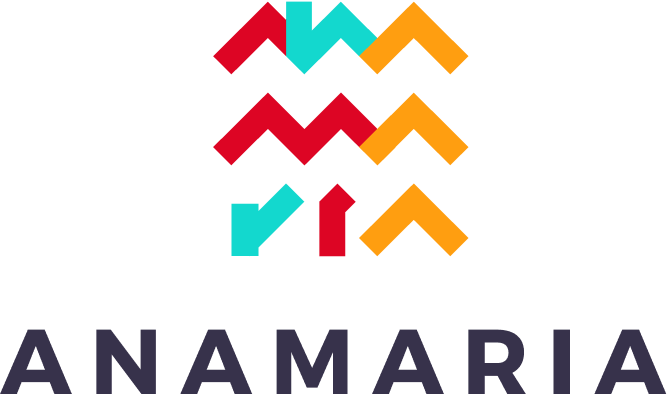Feedback Pathways
While there are several reasons someone might not give you feedback (e.g., fear of your reaction; lack of confidence in their skill to give you feedback; a belief it’s not their place, etc.) -- in my experience working with startup leaders and their teams the #1 reason feedback doesn’t flow is the lack of a pathway. Startups often operate in highly time-constrained settings so most people never feel like they have the time, space, permission or norms to give feedback.
A feedback pathway is the “time” and “space” in the literal sense of when and where to exchange feedback, but also in the sense of norms (is it expected that we exchange feedback? Do I see/hear others do it?) and permission to engage (do I understand that this other person truly wants my feedback?).
Most leaders who I coach currently engage, even if partially, in these three feedback pathways:
1-1s - a private meeting with one other person, usually scheduled on some sort of regular cadence
Retros - or debriefs or any other group discussion where a team reflects on what went well, what could go better with the aim to solve problems, learn and improve
Written, asynchronous feedback - usually as part of a larger review process, sometimes cited and other times anonymously summarized
On their own, these three pathways are insufficient for a robust feedback practice, but the first challenge I often find in startup environments is that these starter pathways are blocked in some way. For example:
Feedback won’t flow in 1-1s if: (1) leaders routinely cancel and don’t reschedule them (2) the agenda is unclear or packed with other items and there is no expectation or time/space within the meeting to do feedback.
Feedback won’t flow in retros if (1) the agenda or facilitating does not allow for all impacts to be discussed; for example, a retro on the delay of a ship date that stays technical or process in nature, but fails to touch on interpersonal impacts that also contributed to the delay (2) the group doesn’t feel safe enough to raise the real issues, concerns or constructive feedback teammates have for others in the group.
Feedback won’t flow in written + async settings when (1) the time burden for writing is onerous and encourages people to skim the surface or not be thoughtful (2) respondents don’t feel safe to be honest (even if promised anonymity) (3) the tight coupling with performance evaluation/promotion/bonuses incentivizes people to be less honest in giving their feedback and more defensive/reactive towards feedback given to them (4) the receiver doesn’t find some way to thank and respond to givers (even at a summary level) so the giver doesn’t get the satisfaction of having/seeing the impact they had with the time and effort they put into giving feedback.
Before embarking on efforts to expand or diversify feedback pathways on your team, you must first ensure your pathways in these first three areas are flowing sufficiently well. Once they are, you can experiment over time with adding additional pathways into your feedback practice. I’ve included a list below with a brief description:
Written vs. Spoken Feedback - These different communication media will elicit different responses and will feel more or less comfortable/accessible to certain teammates. There are advantages and disadvantages to both so the key thing here is just to consider whether you have a mix across your various pathways.
Office Hours - open time on your calendar where anyone can make an appointment or “drop-in” to a private conference room (or virtual room) to engage in a feedback conversation or you can hold sessions with themes where you invite feedback on certain topics/questions
Walking Chats - The face-to-face, high eye contact conversation in a private conference room or Zoom chat can be harder for some teammates to feel comfortable opening up with you. You can experiment with going on walks (slow-paced so your teammate isn’t out of breath while trying to give you feedback) if that might help.
Coffee Chats - Sometimes a more casual non-work atmosphere can help draw out a different depth or angle on feedback.
Live Group Feedback (Upward to Leader/Manager)- While most people assume that feedback (especially constructive) should be done in private vs. in front of others, I often find there is a counterintuitive safety in groups where a group of reports might collectively deliver much richer feedback to their manager than if each report met separately for a 1-1 with the manager. Giving feedback (upwards) in front of teammates has other advantages: (1) feeling more connected to/learning about your teammates who are giving feedback (2) greater empathy for the feedback receiver in how they sort out how to respond to divergent feedback messages. This pathway is also time-efficient to do for a group of skip-level reports (a 90-min session with a team of 6 vs. a one-hour 1-1 with each of the 6)
Debrief Routines/Rituals - Sometimes you can integrate a feedback exchange (short or longer) into some sort of transition time+space or a routine/ritual that you do with someone else. For example, two BD teammates who exchange feedback with each other on the car ride back to the office or airport after the day of client meetings. If you attach feedback to something else that happens and triggers it, that’s one of the most effective ways to build a habit and predictable routine.
Pulse Surveys - You can use surveys with a single question or rating + comment to “take the pulse” of a team or a larger org. Pulse surveys are often used to get a snapshot of morale, sentiment trends or emotional impact.
Pair Feedback - “Speed Dating” - You can use this pathway to make feedback a group/team activity but still create some level of 1-1 privacy. Divide the group up into a set of rotating pairs so that everyone can have a short 1-1 feedback exchange (5-10 mins) with everyone else. Works well in a physical space with enough room to spread out chairs and ensure some level of privacy. It also works great in Zoom using the timed breakout rooms feature.
Surveys - While you want to be thoughtful about not creating feedback fatigue from over-using surveys, there are some types of feedback that you can collect quickly/efficiently via short surveys or you can have someone fill out a survey right before a feedback 1-1 as a way to help them prepare more thoughtfully and only “submit” the survey after the dialogue with you.
Post-Its / Scratch Paper / Blind Voting - You can ask people to give you more “in-the-moment” feedback (cited or anonymous) at the end of a meeting by writing a short note on post-it or scratch paper and leaving it with you on their way out the door. (In Zoom or Slack, you can use polling features for the same effect during a remote meeting.) You can also ask people to close their eyes, raise their hand, and provide a snapshot of feedback by some form of voting (1-5, holding up # of fingers, etc.)
Feedback Relays - This is where other people give you feedback they’ve heard from other people. The most common example might be if you have a direct report who is the leader of a team and s/he provides you some summary feedback about the impact you are having on certain individuals on his/her team. In the example, this is a productive pathway when (1) you trust the direct report to give an accurate relayed report of the impact you had; and (2) there isn’t otherwise an expectation or norm that the team members should be giving you that feedback directly. Sometimes a feedback relay can be quite useful if it happens in such a way where a leader can then open up another pathway for the original person to give them the feedback directly. However, beware of relying on this pathway if either (1) you don’t trust the person to relay accurate reports; and/or (2) you are inadvertently subverting a norm/expectation of direct feedback.
“360” (Third Party) - Some executive leaders will contract with an independent third party or another executive (co-founder, for example) to conduct a “360” which usually refers to collecting feedback about the leader from various areas of the organization (hence the term 360---a circle of feedback, from above, below, and lateral sources) and then presenting a robust report and summary to the leader. 360s are usually done anonymously as a way to ensure maximum honesty. 360s can be hugely insightful especially in situations where feedback pathways don’t exist to that leader or they are blocked because of concerns about psychological safety. They can be a powerful way to uncover blind spots and jumpstart new behaviors. They are also time-consuming, expensive and sometimes run the risk of teaching people that the only way to give honest feedback to a leader is through an anonymous third party.
Revisiting “Expectations Documents” - When people have a positive impact on us, it’s usually because they met or exceeded our expectations. And when people have a negative impact on us, it’s often because they fell short of an expectation we had. In this way, expectation-setting and feedback-exchange are two practices that work well together. One way to draw out feedback is to ask the team or teammate to revisit an expectations agreement/document you previously discussed or “agreed” to. This could be: a job description, a contract, a list of deliverables, a “how to work with me” doc, a list of mutual expectations, etc. The purpose of the interaction is to revisit the document; exchange feedback about where expectations have been met or not; re-align on expectations going forward; identify which expectations were previously left implicit and now can be made more explicit; and move forward.
Software for Collection & Storage - There are several software services out there that have the potential to support a company-wide feedback practice. Some aid with collection of feedback (Lattice, CultureAmp) and others that could be used for storage or some degree of customized feedback collection: Google Suite, Notion, Coda. Depending on the size/scale of feedback you wish to collect, these tools might be useful -- but if your team is small enough (<20 people) those tools might be unnecessary and actually might run the risk creating more friction in an emerging feedback pathway.
Photo provided by IStock




